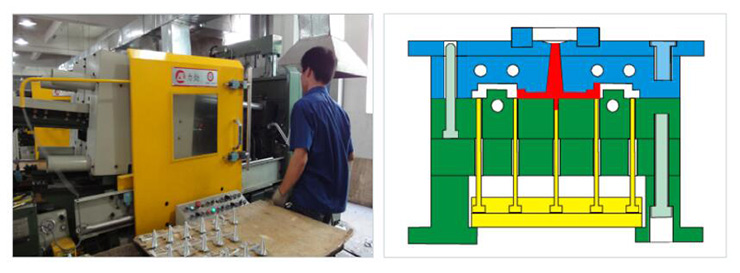Introduction to die casting principle
The die-casting process is a process in which a combination of a die casting machine, a die-casting mold, and a die-casting alloy are organically combined.
The molding process of die-casting products is the process of die-casting filling,under pressure, speed, temperature and time conditions,die-casting liquid material fills the mold cavity at high speed,in the process, these conditions are mutually restricted and interconnected.Balance must be achieved to achieve the perfect casting.
Die Casting Zinc Alloy Material Performance Description
Traditional die-cast zinc alloys have alloys 2, 3, 5, and 7.The most widely used is the No. 3 zinc alloy.High aluminum zinc ZA-8、ZA-12、ZA-27 base alloy developed in the 1970s.
Material selection and application

3#:It has good fluidity and mechanical properties.The best combination of mechanical properties, casting properties and economy.Used in castings that do not require high mechanical strength,Such as toys, lamps and lanterns, decorations, and some electrical appliances.
5#:Good fluidity and good mechanical properties, high wear resistance.Used for castings with certain mechanical strength requirements,such as auto parts, electromechanical parts, mechanical parts, electrical components.
2#:It is used for mechanical parts that have special requirements for mechanical properties, high hardness requirements, and dimensional accuracy requirements.
Za8:Good flow and dimensional stability, high creep resistance.It is applied to workpieces with small size, precision and mechanical strength, such as electrical components.
For example, ZA-3 and ZA-8 are preferred for mobile phone accessories such as face shells; ZA-8 and ZA-12 for internal components such as brackets are preferred.

